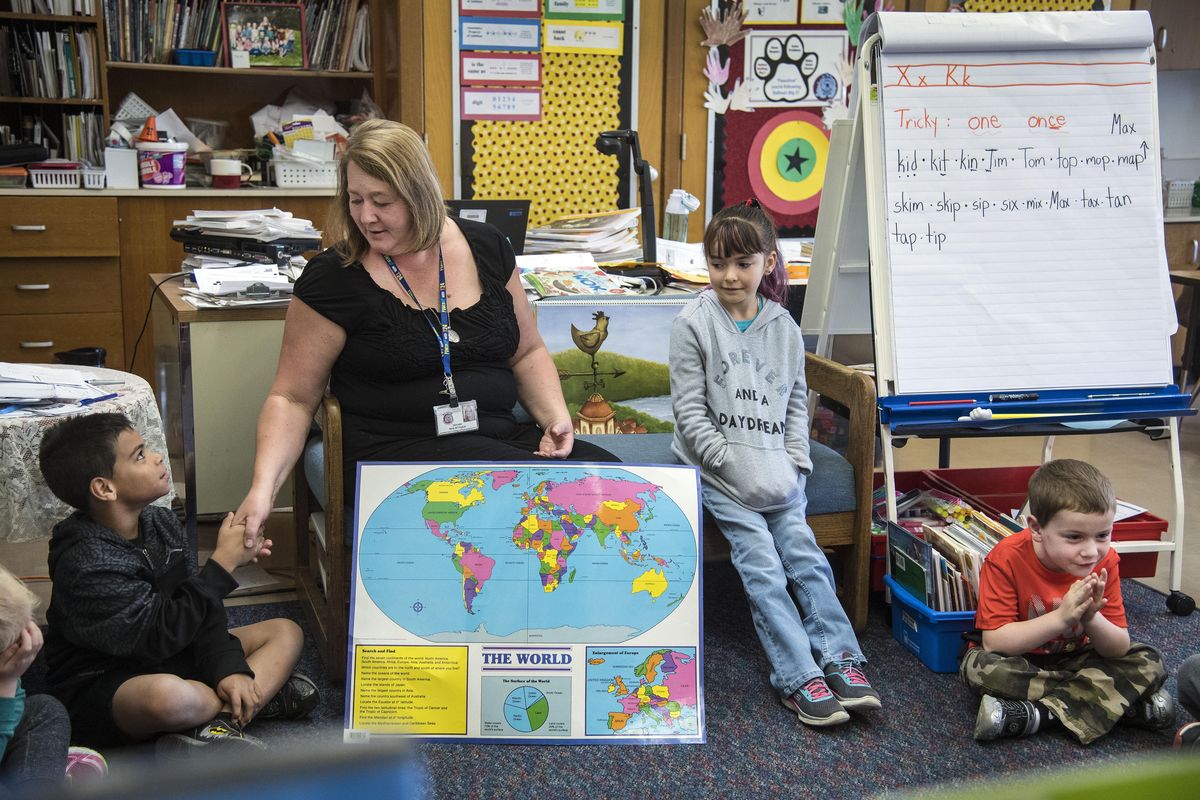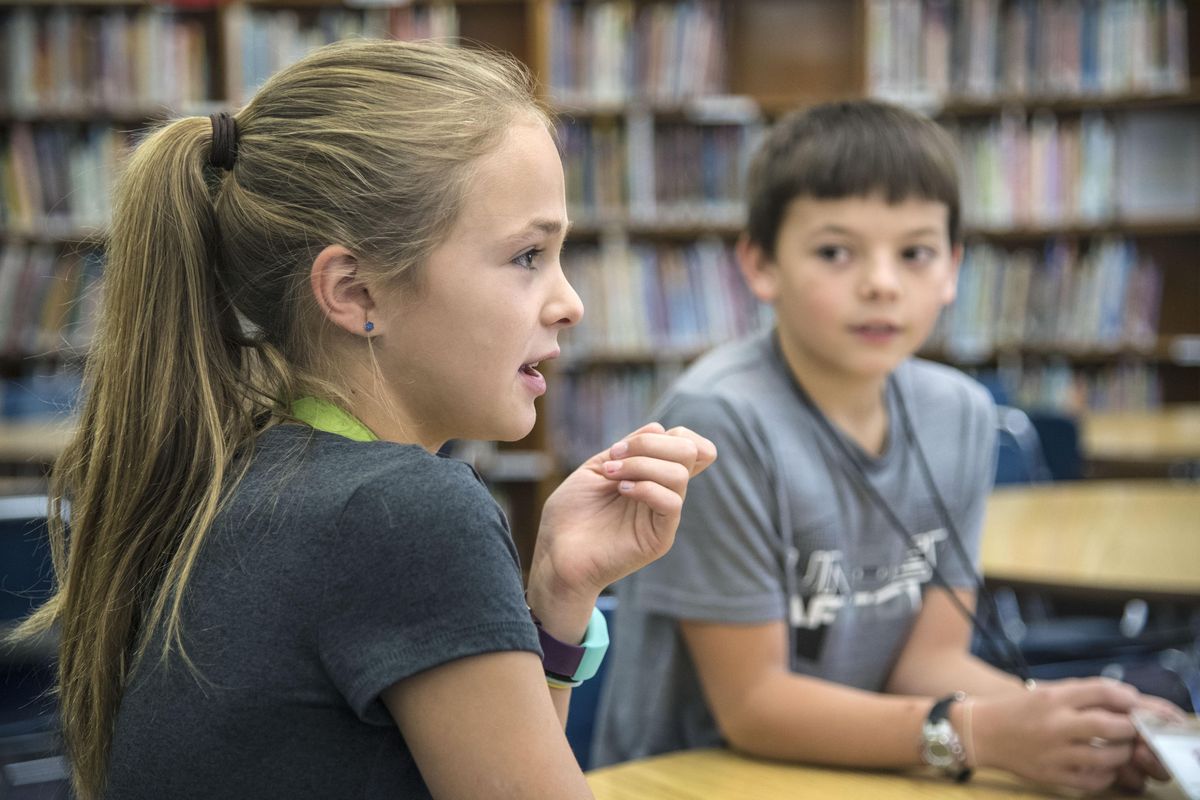Core Knowledge curriculum at selected Spokane schools showing promise
Balboa Elementary School first-grade teacher Rene Bettinson greets student Quentin Carroll as they learn about Japan to open the school day, Sept,. 23, 2016, in Spokane, Wash. Gabriella Sanchez Astroga and Brandon Whetham, right, had already given their greetings. Bettinson and her students are participating in the new curriculum know as Core Knowledge. (Dan Pelle / The Spokesman-Review)Buy a print of this photo
Heather Awbery, the principal at Balboa Elementary, has an odd problem.
“What is going on? Why is my child, at Christmas break, only asking for amphibian books?” Awbery said parents have asked her. “It’s those kinds of things that are almost shocking at first.”
Balboa Elementary is one of three schools in Spokane using a curriculum called Core Knowledge, which focuses on integrating reading and writing with science and history. The idea is to precisely specify the things students need to learn in each grade so they can build on that knowledge year by year.
The curriculum has proven effective in the three years it’s been used at Balboa, in northwest Spokane.
“We were seeing kids far surpass the grade-level expectation by winter,” Awbery said.
Audubon Elementary implemented the curriculum last year and Longfellow Elementary implemented it three years ago.
But Balboa has seen the most dramatic improvement, said Steven Gering, chief academic officer for Spokane Public Schools. Gering said last year Balboa moved 41 percent of the kids who weren’t passing in English Language Arts to passing status.
“The teachers at the site said they have been amazed about how excited kids are about learning,” Gering said.
The curriculum focuses on contextual learning, connecting information that under different systems would be broken into separate lessons. It aligns with Common Core requirements, but as first-grade Balboa teacher Rene Bettinson said, it’s a different road to the same destination.
Bettinson said the curriculum helps neutralize class differences between children.
“It’s the great leveler because these are topics none of the kids really know about,” she said.
Birgit Gorman, a first-grade teacher, said the curriculum also has helped school discipline. “The kids are so engrossed,” there’s not as much acting up, she said.
Balboa implemented the curriculum schoolwide three years ago, after several kindergarten classes served as a district pilot program. For the curriculum to work the entire teaching staff has to buy in, Awbery said. Her staff voted unanimously to adopt it.
Kahlan Cartnell, 8, is in third grade at Balboa. Her class is reading the children’s classic “The Wind in the Willows,” which, she said, has been teaching her about personal responsibility.
“Everyone in our class has really loved it,” she said.
Owen Anderson, 10, said when he studies with friends who go to other schools he notices differences in the way things are taught.
“It seemed like our way was more self-explanatory,” he said.
Although Balboa’s scores have shown the greatest improvement, Longfellow has also improved, although only slightly. Gering isn’t sure why Longfellow hasn’t paralleled Balboa’s performance, although he believes it’s connected to the greater number of low-income students at Longfellow. About 80 percent of Longfellow’s students qualified for free and reduced-price lunch compared with 40 percent of students at Balboa. Still, Gering said, teachers at Longfellow Elementary said their students are just as excited to learn as students at Balboa Elementary.
“It’s just in terms of reading, a big part of reading is having knowledge of that subject area,” he said. “We’re hopeful to see Longfellow’s scores catch up, although it’s not just a one-year thing.”

